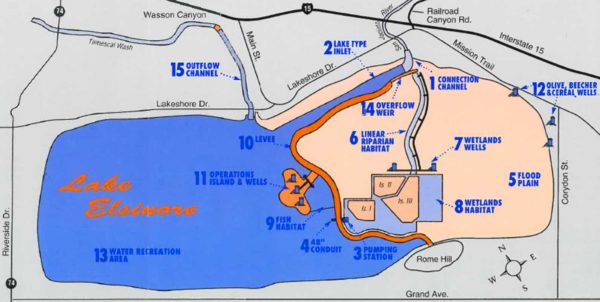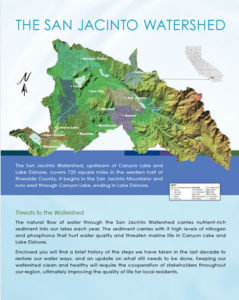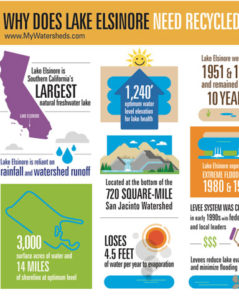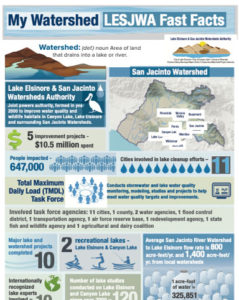

About Lake Elsinore
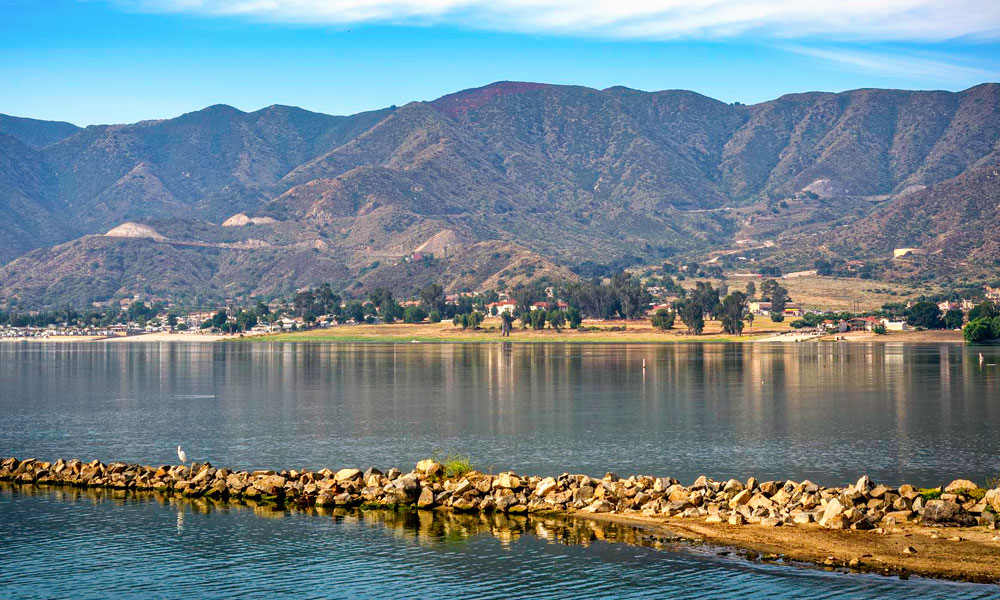 Located in southwest Riverside County, Lake Elsinore is home to Southern California’s largest natural freshwater lake. The recreational lake is situated at the end of the 780-mile square mile San Jacinto Watershed, Lake Elsinore is reliant on rainfall and watershed runoff. With the runoff water also comes sedimentation that can harm the ecology and water quality of the lake. Lake Elsinore is vulnerable to fish die offs and algal blooms. Every day, five million gallons of highly treated recycled water from Elsinore Valley Municipal Water District’s Regional Water Reclamation Facility is added to Lake Elsinore. This water is used to offset evaporation.
Located in southwest Riverside County, Lake Elsinore is home to Southern California’s largest natural freshwater lake. The recreational lake is situated at the end of the 780-mile square mile San Jacinto Watershed, Lake Elsinore is reliant on rainfall and watershed runoff. With the runoff water also comes sedimentation that can harm the ecology and water quality of the lake. Lake Elsinore is vulnerable to fish die offs and algal blooms. Every day, five million gallons of highly treated recycled water from Elsinore Valley Municipal Water District’s Regional Water Reclamation Facility is added to Lake Elsinore. This water is used to offset evaporation.
As a volatile lake, Lake Elsinore has greatly benefitted from water quality improvements initiated by LESJWA. Through the partnership between LESJWA and its supporting agencies, Lake Elsinore has received support through fishery studies, carp removal, pump station improvements, bass stocking, destratification, recycled water delivery and habitat enhancements.
Lake Elsinore Levee Project
The Lake Elsinore Management Project was constructed in the years 1988-1994. The project consisted of a earthen levee, an operations island and causeway for well operations, drilling new wells, providing controlled overflow points into the lake and creating new wetlands habitat areas. The project helped reduce evaporation loss, reduced flood damage, improved water quality, improved recreation opportunities and enhanced fish and wildlife habitats.
Historical Lake Facts
Early 1900’s

1930’s
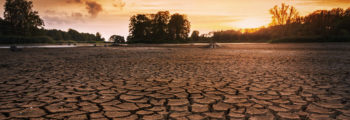
World War II

1980’s

June 2003
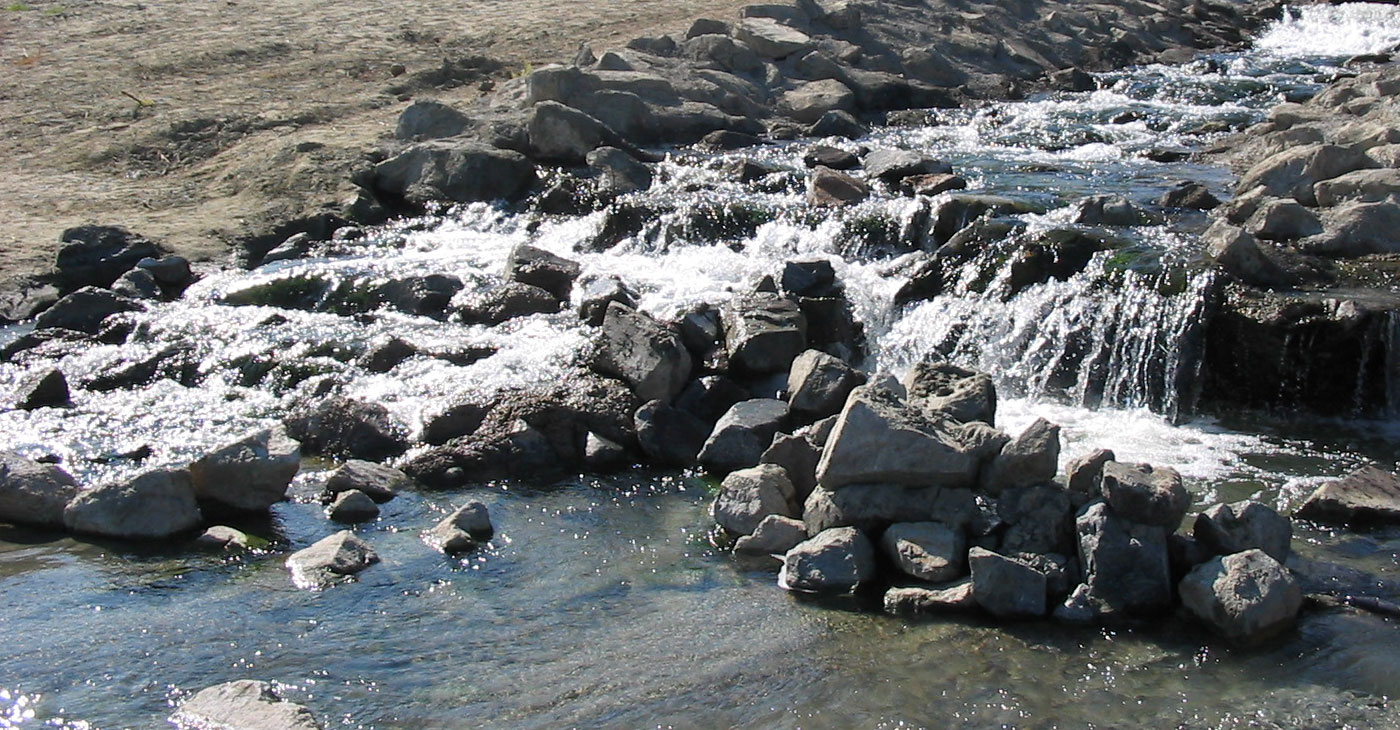
April 2007
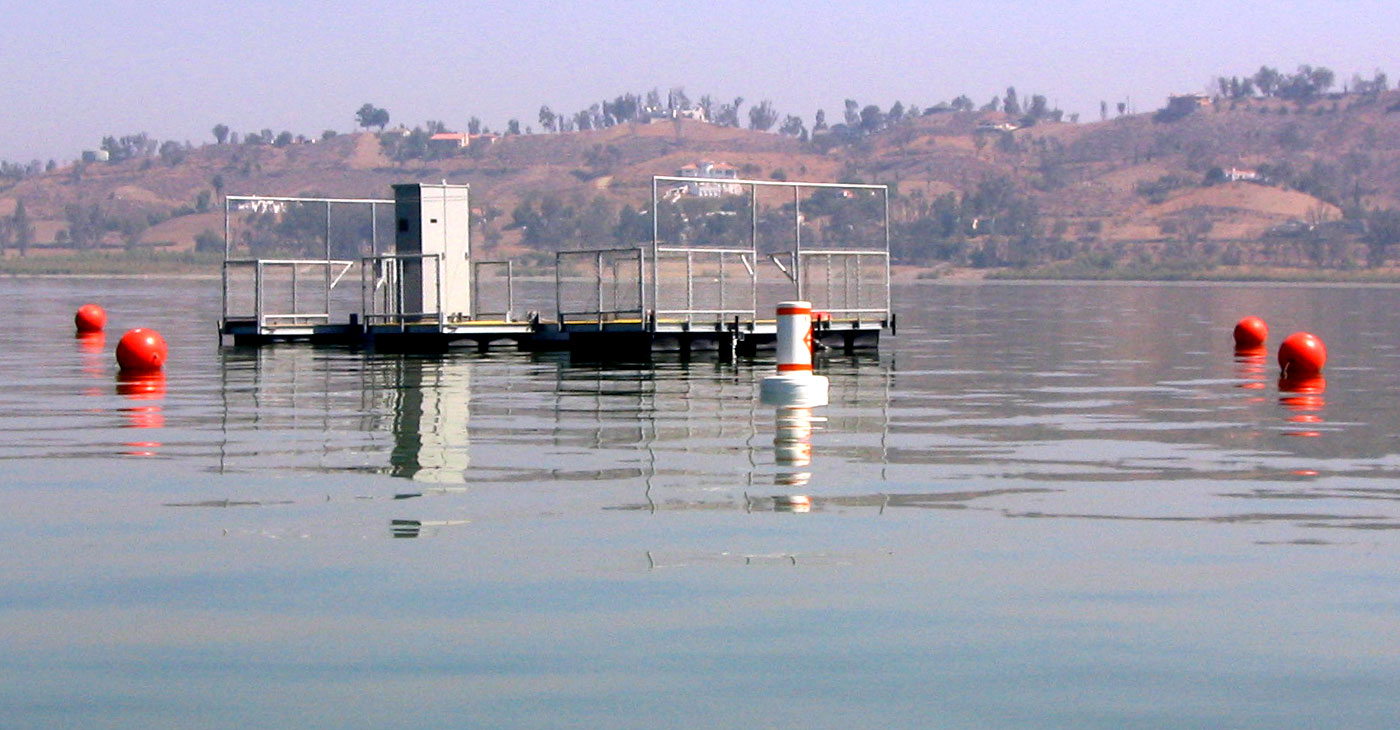
October 2007
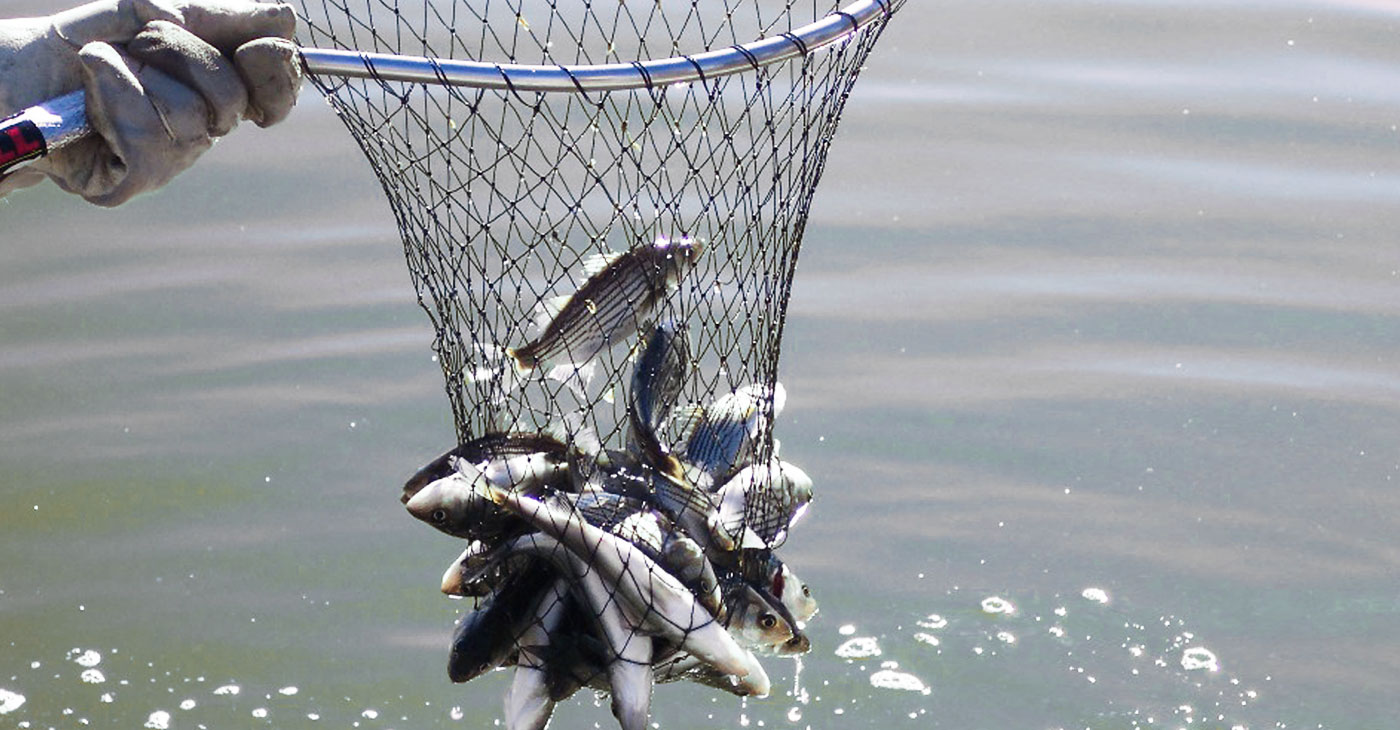
April 2008
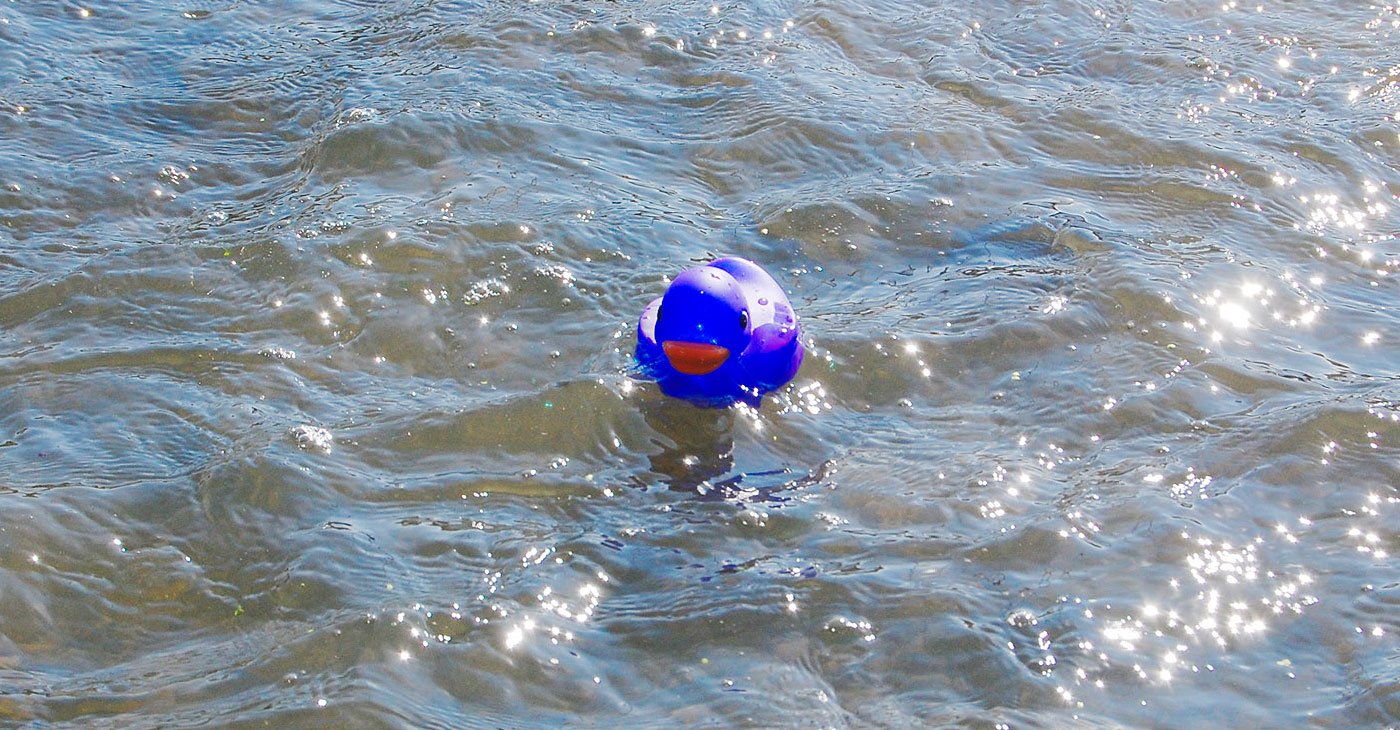
June 2010
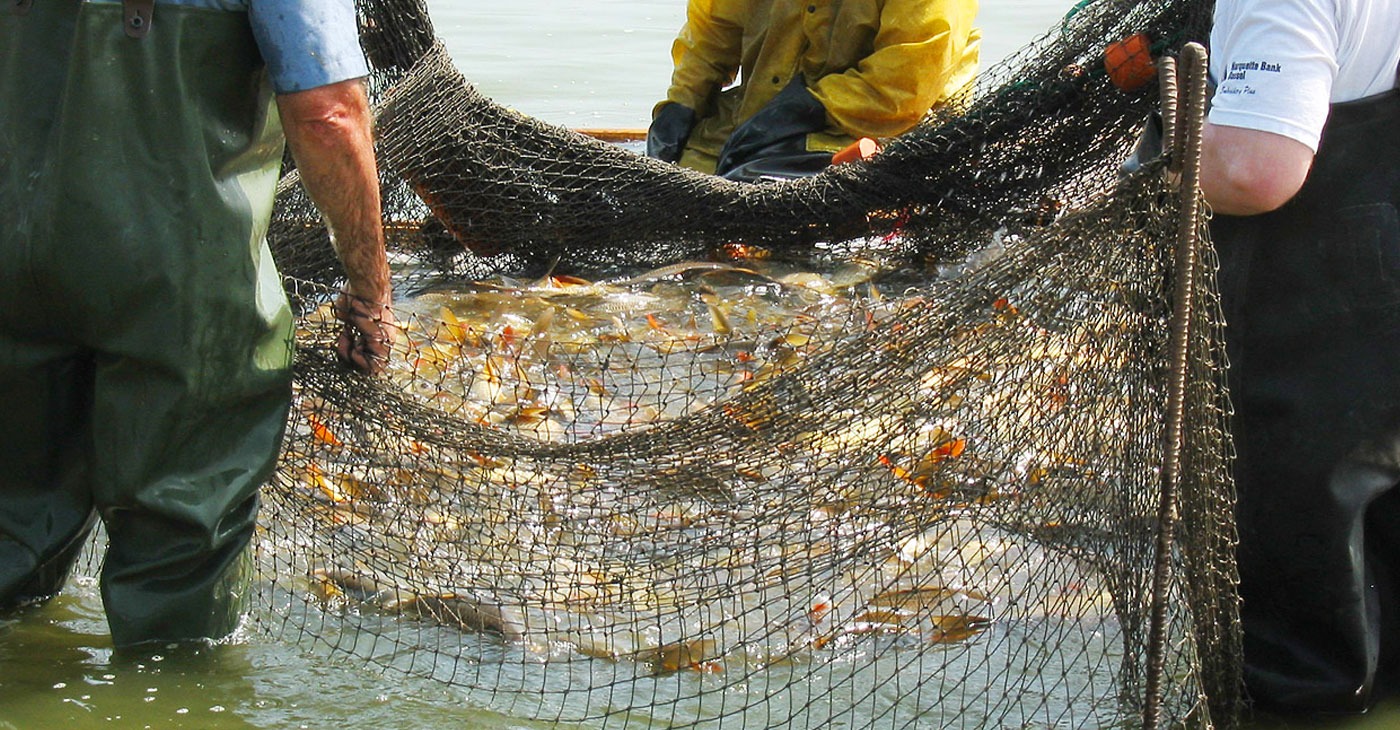
June 2012
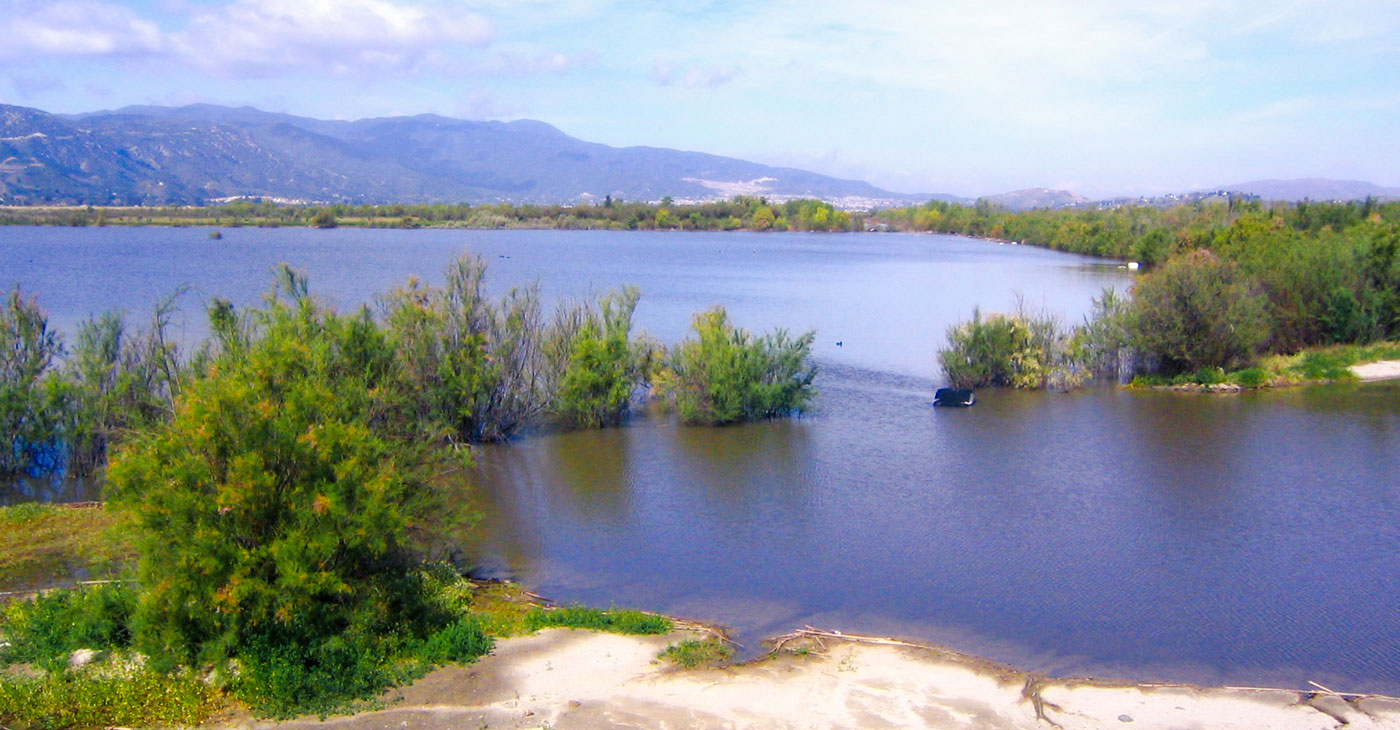
August 2019
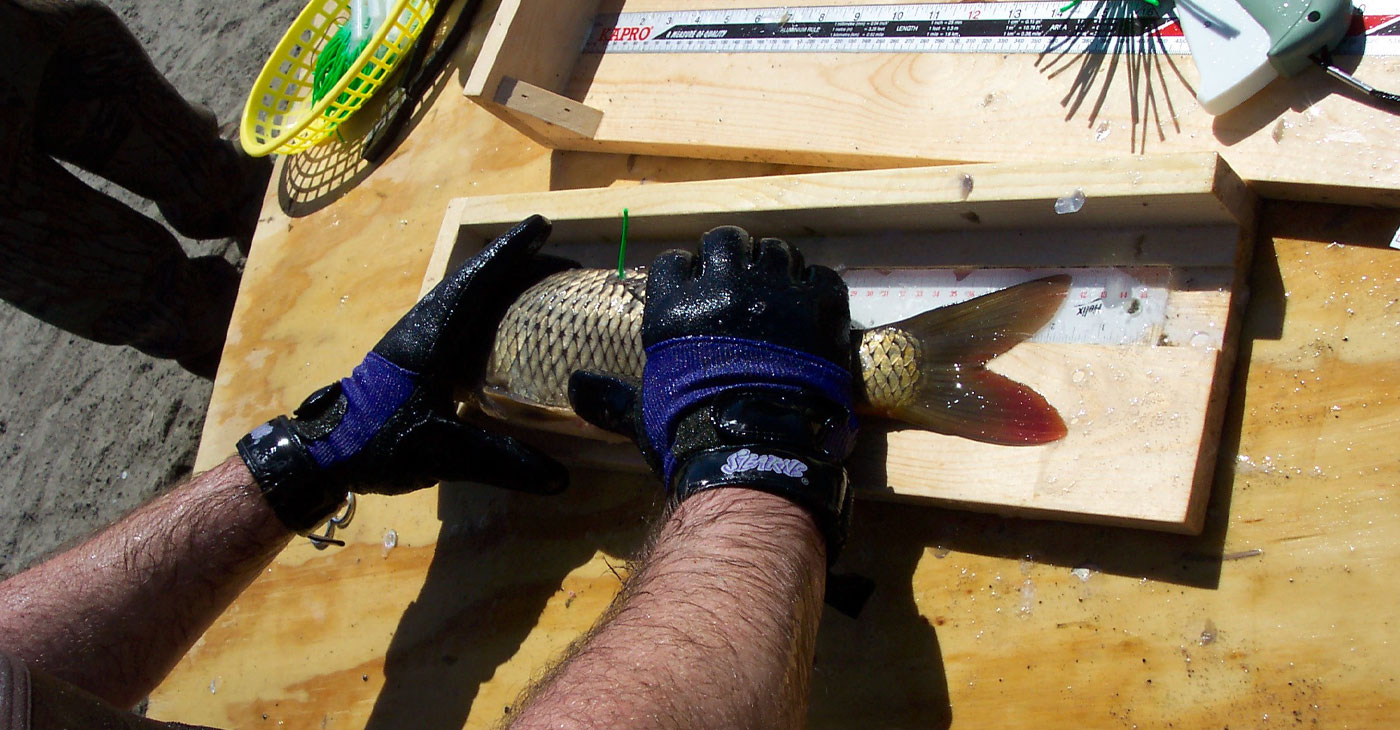
Additional Resources
Sections
Links
Media
Lake Elsinore Fish Stocking – KABC 12/4/20
Lake Elsinore Fish Stocking – KNBC 12/4/20
Lake Elsinore Water Quality Sampling of Lake
Why Does Lake Elsinore Need Recycled Water?
Lake Elsinore Fish Survey – KABC 9/4/19
Fish Survey – Health of Lake Elsinore – Spectrum 2019

